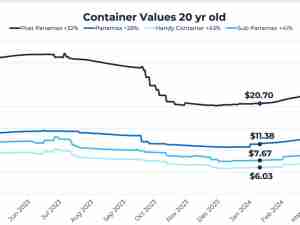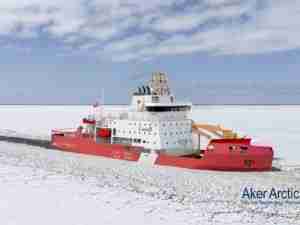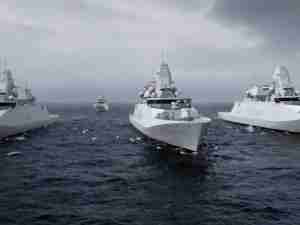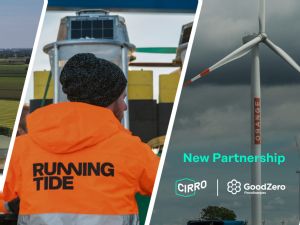Sovcomflot sums up results at Gastech 2017: future of tanker industry belongs to LNG fueled vessels
posted by AJOT | Apr 07 2017 at 12:09 PM | Maritime
The Sovcomflot delegation, headed by President and CEO Sergey Frank, took part in the Gastech 2017 Conference and Exhibition taking place in Tokyo from 4-7 April. This event is the world’s largest forum dedicated to the production, storage, processing and transportation of gas and LNG (liquefied natural gas).
The main theme presented by Sovcomflot at the conference was the use of LNG as a promising fuel for large-capacity vessels, which will significantly increase their environmental compatibility and efficiency.
As the world’s leader in the Aframax tanker segment, Sovcomflot is pioneering the conversion of this class of vessel to LNG as a fuel. A key news event in the run-up to the opening of Gastech was the signing of a bunkering agreement between SCF Group and Shell for the supply of gas engine fuel for SCF’s Aframax tankers that are specially designed to run on LNG. These tankers will join the Sovcomflot Group fleet at the beginning of June 2018. The new tankers will each have a deadweight of 114 thousand tonnes and certified as ice class 1A.
The use of LNG as a fuel for tankers meets the expectations of both ship owners and charterers seeking to improve cargo transportation’s environmental footprint . An LNG-fuelled engine emits 90% less sulphur oxides (SOx), 80% less nitrogen oxides (NOx) and 15% less carbon dioxide (CO2) than an engine running on common heavy fuel.
“Aframax is one of the key size categories for tankers employed in transportation of liquid hydrocarbons. These are ships that are most in demand to cater for Russian oil exports. Sovcomflot and Shell are initiating the conversion of this segment of large-capacity tankers to gas engine fuel. Sovcomflot aspires to become a leader in the global transformation of maritime transport towards more efficient and environmentally friendly systems and technologies. The market is set a new standard of navigation safety and quality, which is especially important for the operation of ships in environmentally vulnerable areas of the world ocean,” Sergey Frank said.
Another innovative project implemented by Sovcomflot, which was highlighted by Sergey Frank in his report at Gastech 2017, aroused great interest from the conference participants. On 26 March the SCF fleet gained the world’s first ice-breaking LNG tanker, Christophe de Margerie, and on 29 March this unique vessel successfully berthed at the gas terminal in the Port of Sabetta (YNAD), becoming the first vessel to do so. The tanker is intended to serve the Yamal LNG project, transporting LNG all year round in the difficult ice conditions of the Kara Sea and Gulf of Ob.
Sergey Frank emphasised that the creation of this unique gas carrier had been preceded by years of work by a large team of specialists from Sovcomflot, Daewoo Shipbuilding & Marine Engineering, ABB, Wärtsilä, Aker Arctic, Yamal LNG, the Central Research Institute of Marine Fleet (CRIMF) and the Russian Registry of Shipping (RS). The tanker was built with the latest and safe technologies.
The propulsion system of the new gas carrier consists of three Azipod units. They provide a high ice-breaking capability and manoeuvrability, as well as the ability to move stern-first (the Double Acting Tanker, DAT concept), which is required to overcome hummocks and heavy ice fields. The total power of the propulsion system is 45 MW. Christophe de Margerie is characterised by high environmental safety. As well as being powered by traditional fuels, the carrier’s propulsion system can also run on boil off LNG.
In his report Sergey Frank noted that during ice trials, which had taken place from February 19 to March 8 in the Kara and Laptev Seas, the ice-breaking LNG carrier had surpassed many design targets. Christophe de Margerie proved her capability to move stern-first in 1.5 m thick ice at a speed of 7.2 knots (the target figure was 5 knots) and head-on at a speed of 2.5 knots (the target figure was 2 knots). In the coastal area to the west of the Nordenskiöld Archipelago Christophe de Margerie successfully broke through an ice ridge with a height of 2 - 4.5 m above the ice, a keel depth of 12-15 m and a cross-sectional area of 650 m2, moving stern first.










